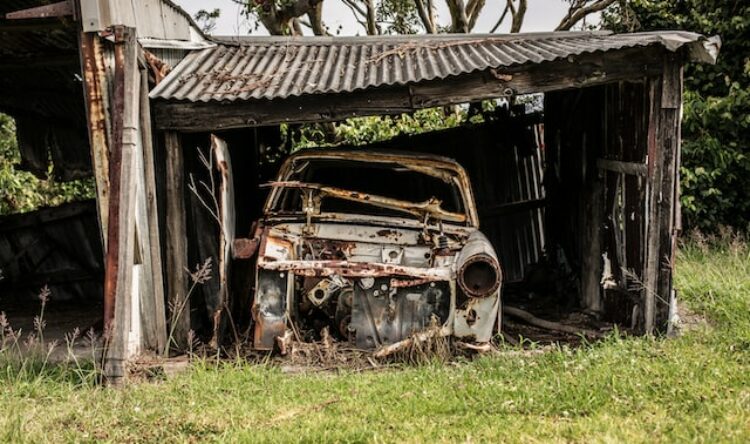Advanced Driving
Moving on from the basic L-driver curriculum, advanced driver training is a great step forward for any driver
The Royal Society for the Prevention of Accidents (RoSPA) define advanced driving as being “… a safe, thoughtful and methodical way of driving”. Through full concentration, becoming more observant, the driver is better able to anticipate changes in the surrounding road and traffic conditions. With training, drivers become better equipped to plan their driving to deal with any circumstances. Advanced Driving has its basis with the ‘system of car control’ detailed in ‘Roadcraft: The Police Driver Handbook’: “Advanced driving is the ability to control the position and speed of the vehicle safely, systematically and smoothly, using road and traffic conditions to progress unobtrusively with skill and responsibility. This skill requires a positive but courteous attitude and a high standard of driving competence based on concentration, effective all-round observation, anticipation, and planning. This must be co-ordinated with good handling skills. The vehicle will always be at the right speed with the correct gear engaged and can always be stopped safely on its own side of the road in the distance that can be seen to be clear.” So, providing they stick to this, advanced drivers should be less likely to have a crash!
THE KEY LEARNING POINTS
The System of Vehicle Control
TYPES OF HAZARD
- Fixed
- Moving
- Environmental
TYPES OF HAZARD
- Fixed
- Moving
- Environmental
DRIVING PLAN
- Information
- Position
- Speed
- Gear
- Accelerate
VISIBILITY Limit Points
- Speed Choice
- Vehicle Stability
Stage of ability
- Fully Qualified Driver
Recap
- Level of experience since passing the driving test
- Any blameworthy collisions or incidents
- Expectations and confidence.
Core of the Session
What needs to be prioritised? (Discuss with student)
- Driving licence and eyesight check (if necessary)
- Familiarity with vehicle and pre-driving checks
- The three types of road & traffic hazard
- Limit points to visibility
- The system of car control.
Skills Development
Defensive driving techniques
- Anticipation – What CAN be seen? What CANNOT be seen?
- What might be REASONABLY expected to happen?
- Contingency plans (worst case scenario)
- The ‘Smith System’ (5 Good Driving Habits).
- Eco-Safe Driving
- Commentary Driving.
Validation
Performance evaluation
- Has the driver responded well to your coaching/instruction where needed?
- Risk assessment – Low, Medium or High?
- How much further training is needed?
Action Plan
What next?
- Agree areas for further practice and improvement
- Determine any new objectives.
Take an advanced driving test and become a member of the Institute of Advanced Motorists (IAM) or RoSPA.
Coaching Exercise 1
The three types of hazard.
At appropriate times on the move, ask the driver to identify ‘information’ ahead, giving examples of:
- Fixed/physical features.
- Moving features (developing hazards).
- Environmental features (how road surface is affected by the weather).
With the fixed features, begin by asking the driver to identify any traffic signs or road markings, stating their correct meaning, along with how the information effects their driving.
Coaching Exercise 2
Chasing the Limit Point. On single carriageway, national speed limit roads, ask the driver to tell you when the limit point is:
- Getting closer – Is the driver slowing down?
- Becoming further away – Is the driver accelerating, if safe to do so?
- Stopping – Is the driver able to stop safely, in the distance seen to be clear?
Coaching Exercise 3
The flexibility of the system of car control. Ask the driver to identify the features:
- Information – what is the next hazard?
- Position – where should the vehicle be positioned in the road?
- Speed – brakes too slow, where needed.
- Gear – to go. Which one?
- Acceleration – smooth and progressive through the hazard.
Depending on driver’s knowledge and experience, compare the system of car control with MSPSL.
Coaching Exercise 4
Defensive driving techniques. In both urban and rural environments, ask the driver:
- What CAN be seen ahead?
- What CANNOT be seen?
- What might be REASONABLY expected to happen?
- How to respond if things go wrong (See Smith System below – “look well ahead”)
Link this with Coaching Exercise 1.
Coaching Exercise 5
The ‘Smith System’ – identify the Five Good Driving Habits and link with the previous four coaching exercises. Ask and confirm these five points with the driver:
- Look well ahead – determine relevant information. What is the escape route or alternative plan, if things go wrong?
- Move your eyes – use the appropriate mirrors. How should you respond to what you see?
- Keep space – never too close to the vehicle in front, be able to stop in distance seen to be clear.
- Spot the problems – which hazard types do we need to prioritise in the circumstances?
- Be seen – do we need to signal? How? Using indicators, lights and/or the horn?
Coaching Exercise 6
EcoSafe driving techniques. Ask the driver to consider their driving style and confirm:
- Correct speed choice/avoiding needlessly high engine revs, harsh acceleration and braking.
- Smooth use of gas pedal, ‘feathering’ it lightly and evenly to adjust driving speed.
- Appropriate gear choice for economy driving.
- When safety factors override economy consideration.
- When to use cruise control.
- Manoeuvring on a warm engine.
- Use of vehicle with/without stop/start technology.
- When to open windows or use the air conditioning.
- Pre-driving checks, such as tyre pressures and vehicle load.
Coaching Exercise 7
Commentary Driving:
- Run through the pre-driving vehicle checks and identify local knowledge.
- On the move, begin by identifying all traffic signs and road markings.
- Next, link these with the three types of hazard.
- Either, talk through driving plan (IPSGA – the system of car control: Information, Position, Speed, Gear, Acceleration).
- What CAN be seen?
- What CANNOT be seen?
- What might be REASONABLY expected to happen?
- Talk through the five Good Driving Habits
The driving style needs to be proactive and the commentary needs to reflect this.





